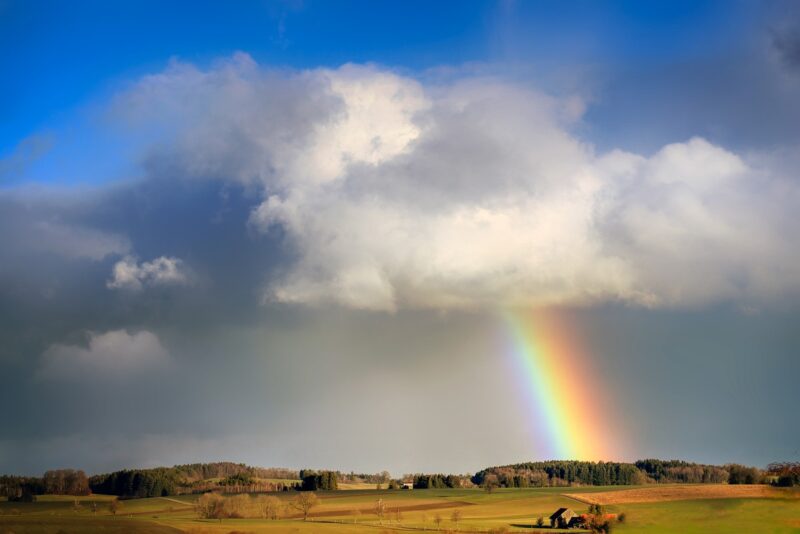The Different Types of Rain Clouds and What They Tell Us About the Weather
November 12, 2024

Understanding the weather can feel almost mystical, but there’s a clear science behind it. Clouds play a critical role in determining the weather conditions we experience daily. In this article, we will delve into the fascinating world of rain clouds, examining their types, characteristics, and what they signify about upcoming weather patterns. From the fluffy cumulus to the ominous nimbus, each cloud tells a unique story.
1. What Are Rain Clouds?
Rain clouds are a type of cloud that produces precipitation, which can range from light showers to torrential downpours. These clouds form when water vapor in the atmosphere condenses into tiny droplets, coalescing into larger droplets that eventually fall to the earth due to gravity. The formation of rain clouds is influenced by many factors, including temperature, humidity, and atmospheric pressure.
2. Types of Rain Clouds
Rain clouds can be classified into several types, each indicating different weather conditions. Let’s explore the most common types:
#
a. Cumulus Clouds
Cumulus clouds are often seen on sunny days and are characterized by their fluffy, white appearance. While these clouds are typically associated with fair weather, they can develop into cumulonimbus clouds, which can produce thunderstorms. If you spot cumulus clouds growing taller and darker, be prepared for potential rain.
#
b. Nimbostratus Clouds
Nimbostratus clouds are thick, gray, and uniformly layered. These clouds are the primary source of continuous, steady rain over large areas. When you see a blanket of gray covering the sky that seems persistent, it’s likely nimbostratus clouds indicating prolonged rainfall.
#
c. Cumulonimbus Clouds
Cumulonimbus clouds resemble tall, towering mountains and can reach up to 60,000 feet in the atmosphere. They are the most significant rain clouds, associated with severe weather conditions including thunderstorms, heavy rain, hail, and tornadoes. The presence of anvil-shaped tops in these clouds often indicates extreme weather is imminent.
#
d. Stratocumulus Clouds
Stratocumulus clouds are low, lumpy clouds that often appear as a sheet or layers of grey or white. While they don’t usually produce significant rainfall, they can bring light drizzle or overcast skies. If you notice these clouds forming, expect mild and humid weather.
#
e. Altostratus Clouds
Altostratus clouds are mid-level clouds that usually cover the sky in a grayish-blue tint. These clouds are prevalent before a storm, especially when rain is expected. Altostratus clouds can cause light precipitation, but their main sign is that intense weather, such as a storm, is developing.
3. How Do Clouds Form and Produce Rain?
Cloud formation begins when warm, moist air rises and cools. As the air rises, it expands and cools. The cooler air can’t hold as much moisture, leading to condensation, which forms cloud droplets. When these droplets combine and grow heavy enough, they fall as rain.
The process of rain formation can be broken down into a few key stages:
1. Evaporation: Water from oceans, lakes, and rivers evaporates into the atmosphere, adding moisture.
2. Condensation: The rising air cools down, leading to the condensation of water vapor into droplets, forming clouds.
3. Coalescence: Tiny cloud droplets collide and merge to create larger droplets.
4. Precipitation: Once droplets are heavy enough, they fall to the ground as rain.
4. What Do Different Cloud Types Tell Us About Upcoming Weather?
Monitoring cloud types can provide valuable insights into weather patterns, allowing us to anticipate shifts in climate:
– Low-Level Clouds: Mainly stratocumulus and stratus clouds, indicating cooler, often rainy weather.
– Mid-Level Clouds: Altostratus and altocumulus clouds suggest a change in weather, typically indicating that a storm may be approaching.
– High-Level Clouds: Cirrus clouds often signal fair weather; however, if they thicken, they may indicate that a change in weather is on the horizon.
– Severe Weather Clouds: Cumulonimbus clouds usually denote extreme weather conditions, including thunderstorms, heavy rain, and even tornadoes.
5. Conclusion
Understanding rain clouds and their characteristics is not just an academic exercise; it’s a practical way to prepare for daily weather conditions. The next time you look up at the sky, observe the types of clouds present and interpret their message about what the weather has in store.
Whether you’re planning outdoor activities or preparing for a storm, being able to read the sky could be your best tool for weather forecasting.
Stay curious about the clouds above you; they are not just shades of white and gray, but indicators of Earth’s atmospheric behavior.








